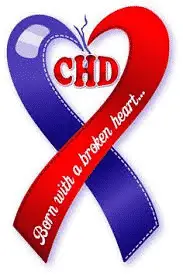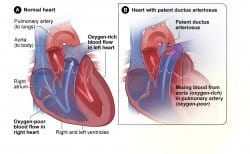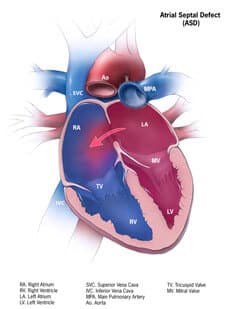What is the Definition of Congenital Heart Disease in adults and children? Congenital heart defects (CHDs) are the most common types of birth defects, and babies born with these conditions are living longer and healthier lives.
What is the Definition of Congenital Heart Disease in Adults and Children? Causes of Congenital Heart Disease
Congenital heart disease definition is a problem with the heart’s structure at birth. These defects occur in the fetus while it is developing during pregnancy. The definition of a congenital heart defect in adults and children are the result of:
- Genetic or chromosomal abnormalities
- Excessive alcohol consumption
- Medications
- Maternal viral infections
- Rubella and measles
- Illegal drugs
Congenital Heart Disease: Who Is Affected
Congenital heart disease affects 1.2% of all births in the United States. The most common types of congenital heart diseases are ventricular septal defect, atrial septal defect, and tetralogy of Fallot.
Congenital heart disease range from simple defects to complex effects with life-threatening symptoms.
About 25% of babies with a congenital heart defect, has a critical congenital heart defect. These types of congenital heart defects can cause congenital heart failure.
How Long Can People Live With Congenital Heart Disease?
Over 1.1 million people over the age of 21 have congenital heart disease in the United States.
Often time, these people “slip” through the cracks of the health care system because they are too old to be seen by the pediatric cardiologist, an adult cardiologist is not trained to recognize congenital heart disease.
As a cardiac nurse, I often am asked. ” How long can people live with congenital heart disease?”
I am 53 years of age and I have a congenital heart disease called left ventricular noncompaction. I take my medication and follow a low-carb diet.
Congenital heart disease refers to problems with the structure of the heart.
Congenital heart disease is the most common type of birth defect. Despite the advances in technology, many children are still being discharged home from the hospital undiagnosed.
Acyanotic heart disease primarily involves atrial septic defects, aortic coarctation, and obstructive lesions. The most common form of cyanotic congenital heart disease includes the Tetralogy of Fallot.
Symptoms of Congenital Heart Disease, Illness and Disability of Congenital Heart Disease
At least 15% of congenital heart diseases are associated with genetic conditions. About 20% to 30% of people with a CHD have other physical problems or developmental or cognitive disorders.
Children with CHD are about 50% more likely to receive special education services compared to children without birth defects.
The occurrence and severity of a developmental disability or delay increase with how complex the heart defect is. For example, more than 80% of individuals with mild CHD have no developmental disabilities.
However, more than half of those with a more critical type of CHD have some form of disability or impairment. Guidelines for the screening, diagnosing, and managing developmental disabilities or delays in children with congenital heart disease have recently been developed.
Related Articles
Best stethoscope for nurses
Gift ideas for someone who has had a stroke
Widowmakers heart attack
There are some congenital heart defects that can cause heart failure. For example, left ventricle non-compaction (LVNC) is a hereditary disease that causes a malformation in the left ventricle. Many times it is not found until the person is an adult in their 40’s.
Heart Murmur
Three percent of babes are born with a murmur. Heart murmurs can be a common finding in neonates and children. The majority of murmurs originate from normal flow patterns with no abnormalities noted. Approximately 66% of newborns have “normal’ murmurs for many days after birth.
Costs of Congenital Heart Disease
In the United States, hospital costs for the population of individuals with CHDs in 2004 were about $1.4 billion. Care for individuals with severe Congenital Heart Defects accounted for about $511 million, or about 37%, of the hospital costs associated with CHDs.
If we updated these estimates to 2011 dollars, these costs for the population of individuals with CHDs total $1.9 billion. CDC researchers are working on updating these cost estimates with current data.
In 2005, for a privately insured population in the United States, the estimated medical care costs for an average infant with any CHD was about $23,000, and costs were higher for infants with a severe CHD.
In addition to the medical costs of care for CHDs, families of children with CHDs can face other costs, such as lifestyle changes, emotional stress, family uncertainty, and being unable to return to work in order to care for their child.
Can Congenital Heart Defects Be Cured?
Normally, congenital heart defects cannot be cured. They are treated surgically or with medication. I have a congenital heart defect called Left Ventricle Non-Compaction (LVNC).
Basically, this heart defect occurs in utero. This defect occurs when the muscles of the left ventricle do not compact. The heart muscle of the left ventricle should be smooth.
In LVNC, the muscle has trabeculations or ridges that make the muscle weak. Blood can also accumulate in the trabeculations. When this happens the blood can clot and cause strokes. This is a type of cardiomyopathy and the treatment is the same as any other cardiomyopathies or congestive heart failure.
Tips for Pregnant Mothers to Screen for Congenital Heart Disease
- There are several tests that are now available for screening to assess for heart defects in the unborn baby. Be sure and ask your doctor about these tests. in fact, these tests should be part of your routine prenatal care.
- Before leaving the hospital make sure that you know what your baby’s pulse oximetry is. The pulse oximetry measures the amount of oxygen in the blood.
- Make sure you go to your baby’s routine check-ups.
Congenital Heart Disease in Babies Symptoms
- Shortness of breath
- A fast heartbeat
- Lack of energy
- Failure to thrive
- Cold hands and feet
- Sweating
- Blue lips and blue skin
- Hole in the heart symptoms
Can a Child Have a Heart Attack?
Yes, a child can have a heart attack. The majority of the time it is a cardiac arrest. The leading cause of cardiac arrest is heart failure. Often times the heart failure is to do congenital disease.
Many of these heart defects are detected at the 20-week ultrasound.
Conclusion
When parents are told that their child has a congenital heart defect, they are confused and scared. However, there have been leaps and strides in the care of children with congenital heart defects. Do you know of someone with a congenital heart defect? Join this discussion by commenting below!




